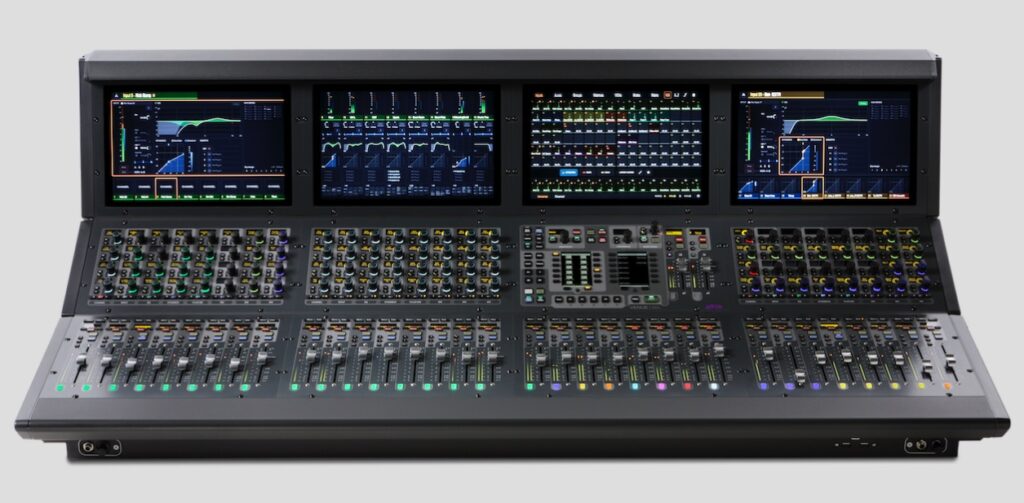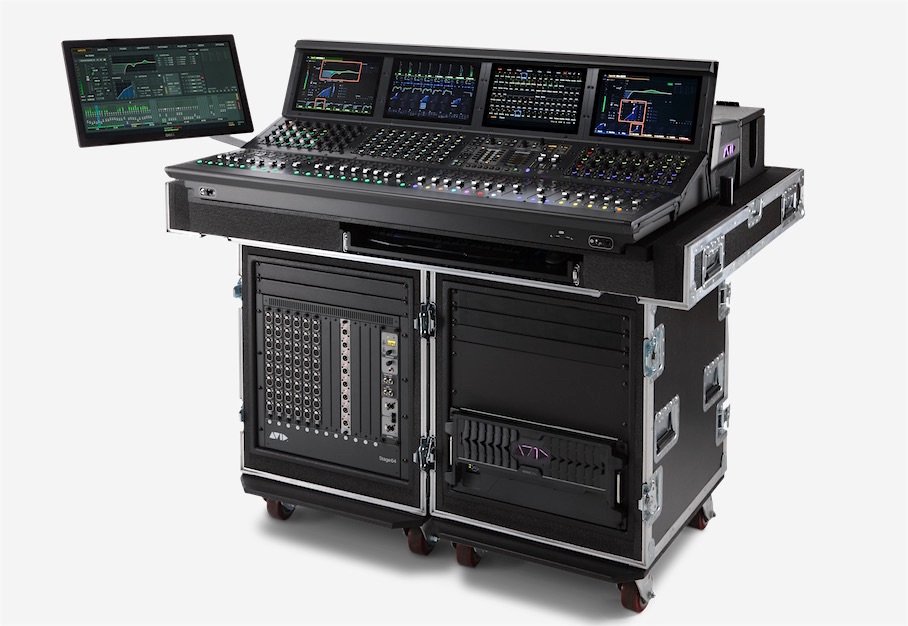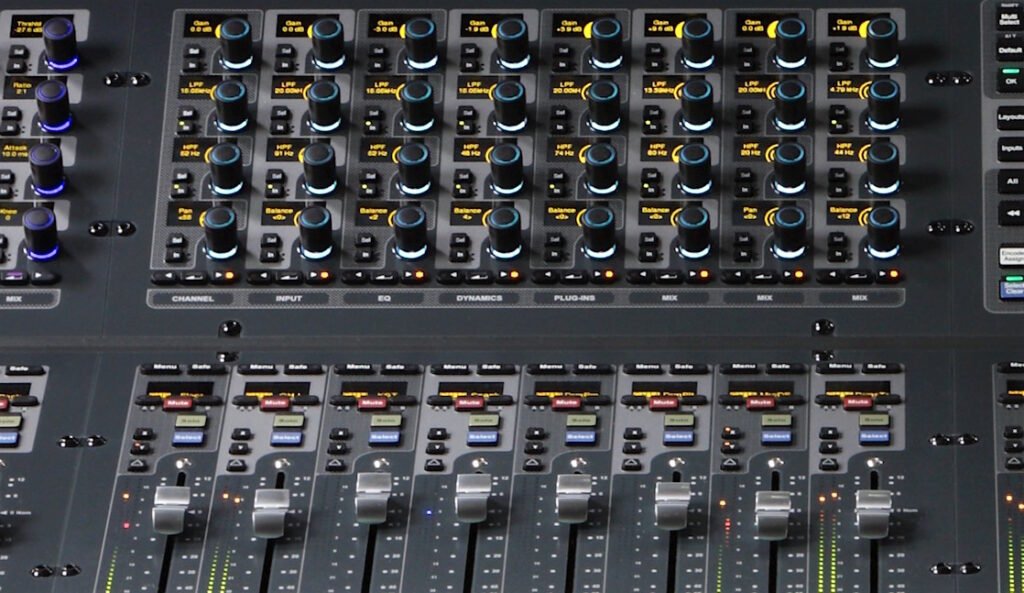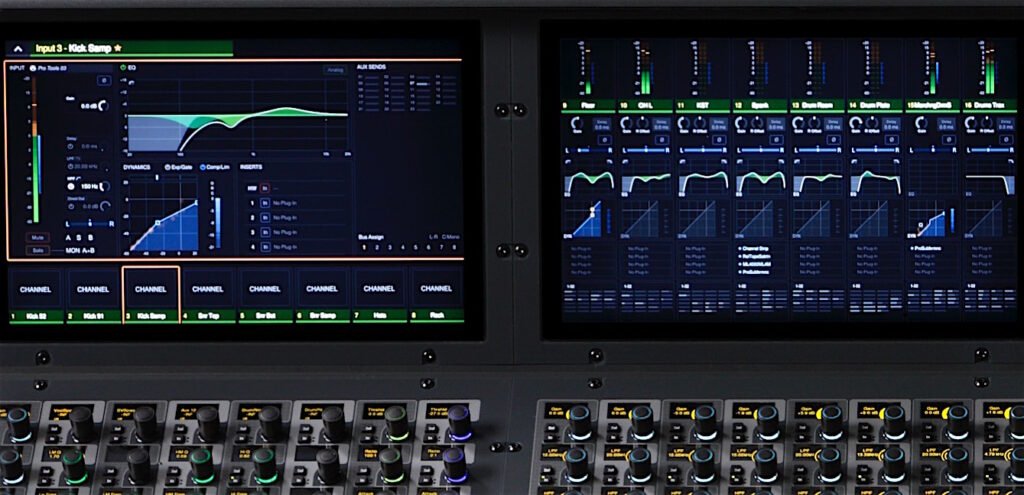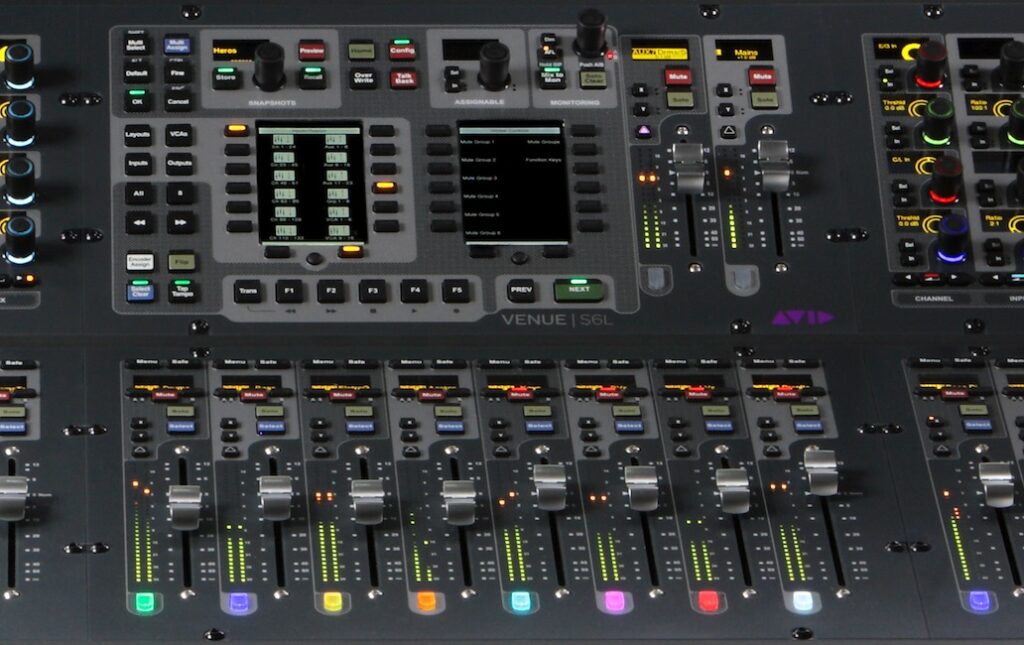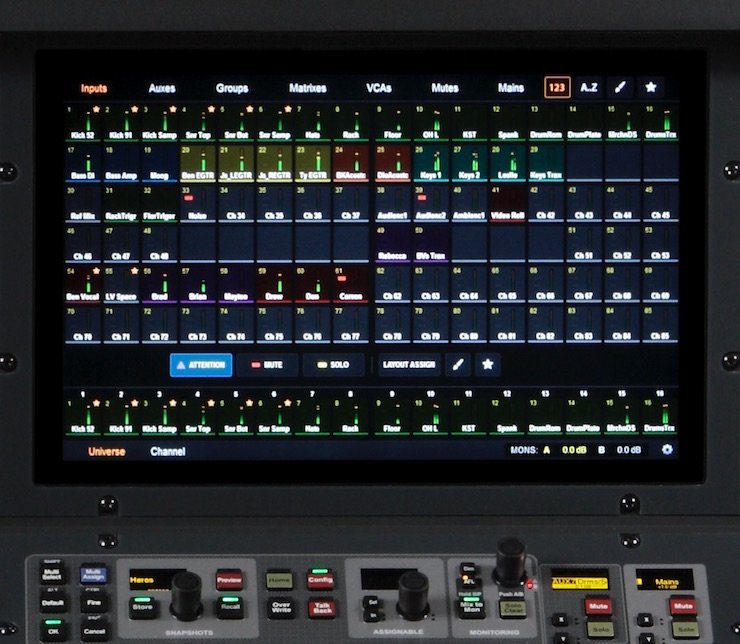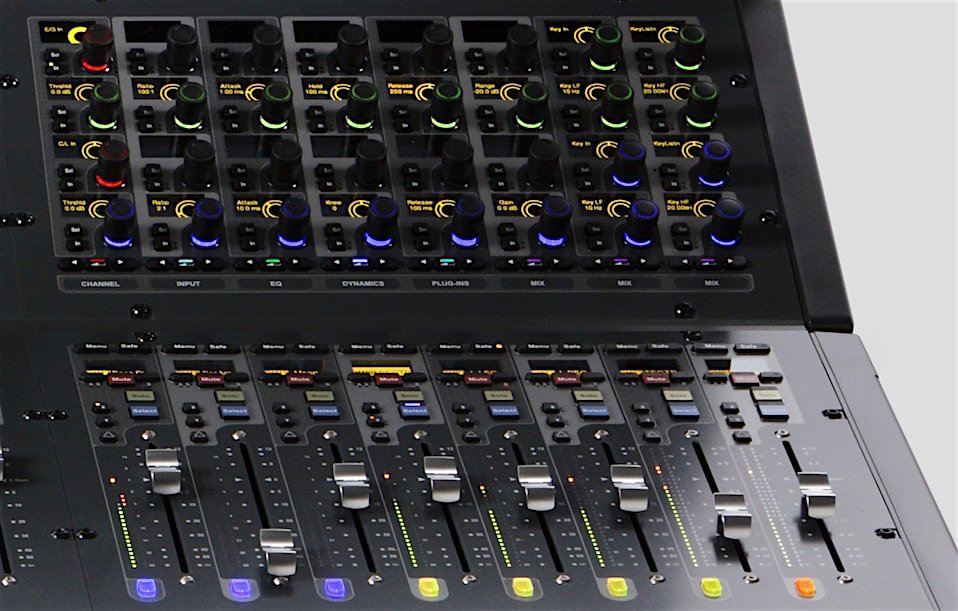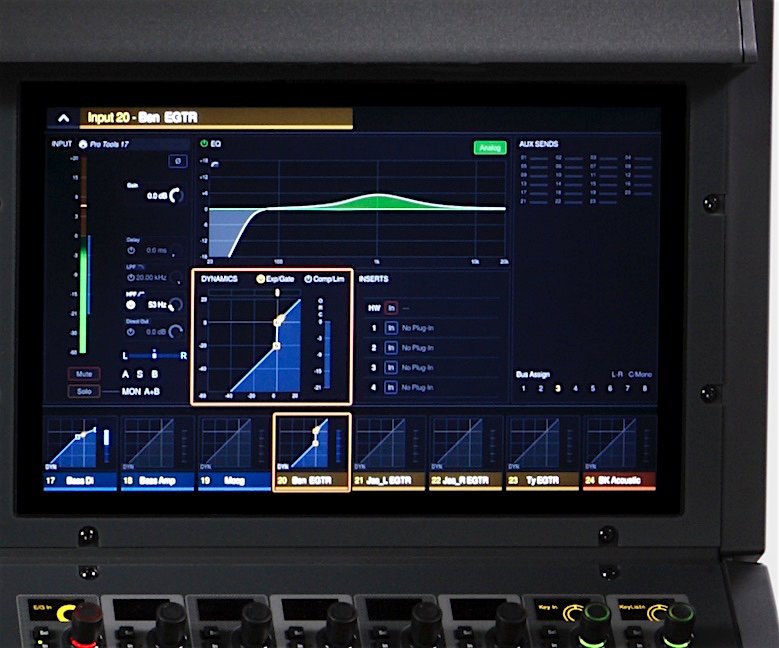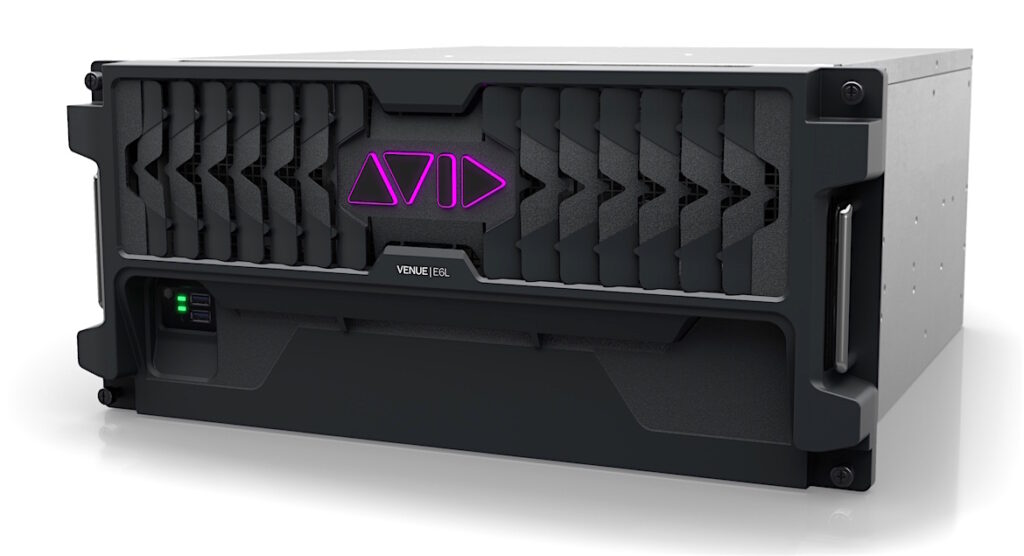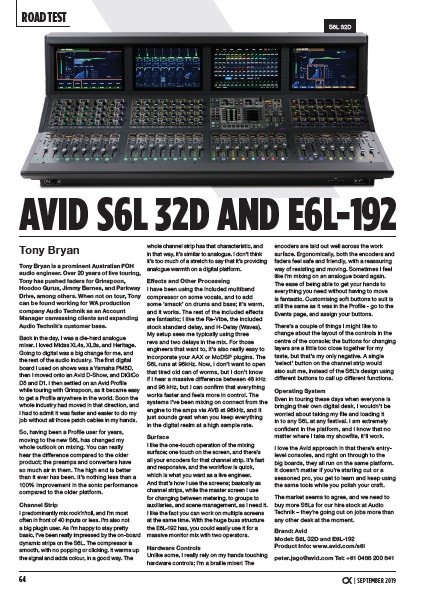News
17 Sep 2019
Avid S6L 32D and E6L-192

Subscribe to CX E-News
ROADTEST
Avid S6L 32D and E6L-192
by Tony Bryan.
Tony Bryan is a prominent Australian FOH audio engineer. Over 20 years of live touring, Tony has pushed faders for Grinspoon, Hoodoo Gurus, Jimmy Barnes, and Parkway Drive, among others. When not on tour, Tony can be found working for WA production company Audio Technik as an Account Manager canvassing clients and expanding Audio Technik’s customer base.
Back in the day, I was a die-hard analogue mixer. I loved Midas XL4s, XL3s, and Heritage. Going to digital was a big change for me, and the rest of the audio industry.
The first digital board I used on shows was a Yamaha PM5D, then I moved onto an Avid D-Show, and DiGiCo D5 and D1. I then settled on an Avid Profile while touring with Grinspoon, as it became easy to get a Profile anywhere in the world.
Soon the whole industry had moved in that direction, and I had to admit it was faster and easier to do my job without all those patch cables in my hands.
So, having been a Profile user for years, moving to the new S6L has changed my whole outlook on mixing. You can really hear the difference compared to the older product; the preamps and converters have so much air in them. The high end is better than it ever has been. It’s nothing less than a 100% improvement in the sonic performance compared to the older platform.
Channel Strip
I predominantly mix rock’n’roll, and I’m most often in front of 40 inputs or less. I’m also not a big plugin user. As I’m happy to stay pretty basic, I’ve been really impressed by the on-board dynamic strips on the S6L. The compressor is smooth, with no popping or clicking. It warms up the signal and adds colour, in a good way.
The whole channel strip has that characteristic, and in that way, it’s similar to analogue. I don’t think it’s too much of a stretch to say that it’s providing analogue warmth on a digital platform.
Effects and Other Processing
I have been using the included multiband compressor on some vocals, and to add some ‘smack’ on drums and bass; it’s warm, and it works. The rest of the included effects are fantastic; I like the Re-Vibe, the included stock standard delay, and H-Delay (Waves).
My setup sees me typically using three revs and two delays in the mix. For those engineers that want to, it’s also really easy to incorporate your AAX or McDSP plugins.
The S6L runs at 96kHz. Now, I don’t want to open that tired old can of worms, but I don’t know if I hear a massive difference between 48 kHz and 96 kHz, but I can confirm that everything works faster and feels more in control. The systems I’ve been mixing on connect from the engine to the amps via AVB at 96kHz, and it just sounds great when you keep everything in the digital realm at a high sample rate.
Surface
I like the one-touch operation of the mixing surface; one touch on the screen, and there’s all your encoders for that channel strip. It’s fast and responsive, and the workflow is quick, which is what you want as a live engineer.
And that’s how I use the screens; basically as channel strips, while the master screen I use for changing between metering, to groups to auxiliaries, and scene management, as I need it. I like the fact you can work on multiple screens at the same time.
With the huge buss structure the E6L-192 has, you could easily use it for a massive monitor mix with two operators.
Hardware Controls
Unlike some, I really rely on my hands touching hardware controls; I’m a braille mixer! The encoders are laid out well across the work surface. Ergonomically, both the encoders and faders feel safe and friendly, with a reassuring way of resisting and moving.
Sometimes I feel like I’m mixing on an analogue board again. The ease of being able to get your hands to everything you need without having to move is fantastic. Customising soft buttons to suit is still the same as it was in the Profile – go to the Events page, and assign your buttons.
There’s a couple of things I might like to change about the layout of the controls in the centre of the console; the buttons for changing layers are a little too close together for my taste, but that’s my only negative. A single
‘select’ button on the channel strip would also suit me, instead of the S6L’s design using different buttons to call up different functions.
Operating System
Even in touring these days when everyone is bringing their own digital desk, I wouldn’t be worried about taking my file and loading it in to any S6L at any festival. I am extremely confident in the platform, and I know that no matter where I take my showfile, it’ll work.
I love the Avid approach in that there’s entry-level consoles, and right on through to the big boards, they all run on the same platform. It doesn’t matter if you’re starting out or a seasoned pro, you get to learn and keep using the same tools while you polish your craft.
The market seems to agree, and we need to buy more S6Ls for our hire stock at Audio Technik – they’re going out on jobs more than any other desk at the moment.
Brand: Avid
Model: S6L 32D and E6L-192
Product Info: www.avid.com/s6l
Contact: peter.jago@avid.com Tel: +61 0488 200 841
The Specs:
S6L 32D
12-inch daylight-visible touchscreens: 1 Master Touchscreen, 3 Channel Touch Modules
Faders: 32 + 2
Knob Modules with high-resolution OLEDs and tri-colour function indicators: 96 assignable knobs across 3 Channel Knob Modules
Master Live Module: Graphic TFTs with soft buttons; Touch and Turn assignable encoder; 2 assignable faders; monitoring, layout and snapshot controls; transport controls and function buttons
Metering: 30-segment meters per channel, with pre- and post-fade metering options; Nominal indicator, Expander/Gate status and Compressor/Limiter gain reduction meters
Analog inputs: 8 XLR mic/line inputs with 48V and signal present LEDs
Analog outputs: 8 XLR outputs with mute and signal present LEDs Digital inputs: 4 pairs of XLR stereo AES/EBU (8 channels total) Digital outputs: 4 pairs of XLR stereo AES/EBU (8 channels total)
Headphone outputs: 2 independent 1/4” TRS stereo headphone jacks
Ancillary I/O: DVI-D video out, 5 USB 2.0 (2 rear, 2 front, 1 internal), ECx Ethernet port for wired/wireless remote control, GPIO (8 in/8 out), 2 footswitch, Linear Time Code input, MIDI I/O
Ethernet AVB ports: 2 etherCON (copper), 2 selectable as etherCON (copper) or SFP (fiber); redundant ring topology
Power supply: Dual redundant, internal hot-swappable PSUs
Dimensions (H x W x D): 91,388 x 1,304 x 787mm
Weight: 70kg
E6L-192
Sample rates: 96 kHz
Input channels: 192
Input processing: HPF, LPF, 4-band PEQ, Expander/Gate, Compressor/Limiter, Delay, 4 plugin inserts, hardware insert
Mix busses: 96 + LCR
Output processing: 7-band PEQ, Compressor/Limiter, Delay, 4 plugin inserts, hardware insert
Matrix: 24 x 24
VCAs: 32
Stereo solo busses: 2, with independent control
Graphic EQs (31-band): 32
Digital signal processing: Supports up to four HDX-192 DSP Expansion Cards for plugin processing; includes one card
Plugin support: 64-bit AAX DSP; also supports Waves SoundGrid systems through the WSG-HD Option Card for full integration with S6L, or over MADI
Plugin slots: 200
Pro Tools integration: Record/play back up to 128 audio tracks via Ethernet AVB
Expansion Option Card slots: 4 max
Ethernet AVB ports: Includes two AVB-192 Ethernet AVB Network Cards with two ports (up to two AVB cards supported), selectable as etherCON (copper) or SFP (fiber), with redundant ring topology
I/O sharing: Supports up to three Stage 64 and four Stage 16 racks, up to 192 inputs total (requires two AVB-192 Ethernet AVB Network Cards to share I/O)
Word Clock I/O: Clock I/O BNC, 75 Ohm coaxial
USB ports: 5 USB 2.0 ports (2 front, 2 back, 1 internal) Power supply: N+1 redundant, internal hot-swappable PSUs Dimensions (H x W x D): 218 x 430 x 483 mm
Rack spaces: 5U
Weight: 33 kg
CX Magazine – Sept 2019 Entertainment technology news and issues for Australia and New Zealand – in print and free online www.cxnetwork.com.au
© CX Media
Subscribe
Published monthly since 1991, our famous AV industry magazine is free for download or pay for print. Subscribers also receive CX News, our free weekly email with the latest industry news and jobs.

